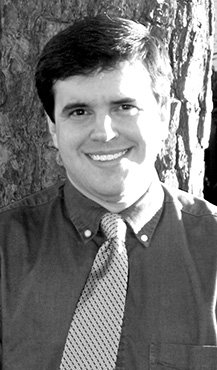Science is about inquiry. Observation is the tool used to find out answers, from the stars above to the rocks under our feet. And one prominent scientist, David Owen, helped Arkansas understand its own geology as the first state geologist in 1857.
David Dale Owen was born in Scotland in 1807, the fourth of eight children. Growing up, he was mostly taught by private tutors. His father, Robert Owen, was a wealthy textile manufacturer, social reformer and noted philanthropist. His reputation grew when he gave his mill in Scotland to his workers, letting them manage the mill and divide its profits among themselves. Impressed by the results, Owen set up other worker-owned mills across Scotland and eventually into the United States.
In the late 1820s, Owen’s father took the family on a journey to the United States to set up another employee-owned mill at New Harmony, Indiana. He arrived with his family in New York City in January 1828. At that time, there were no laws restricting immigration into the United States. Citizenship simply required a residency of five years. Any man could step off the boat and immediately become one of the most successful people in their field in the young nation. And within a few years, the Scottish immigrant would become one of the most important scientific minds in the country.
He returned to London in 1831, studying chemistry and geology at the University of London before returning to the United States. Beginning in 1835, he spent two more years at Ohio Medical College, earning a medical degree but never practicing medicine. He began working as a geologist in Indiana in 1837, carefully studying the rock formations and compositions of structures in the area. His skills soon gained the attention of the state government.
He was appointed the first state geologist of Indiana in 1837, given a salary of $1,500 per year plus expenses. Owen understood that he had a special responsibility to the public as well. While he was fascinated with his own discoveries, he tried to educate the public on the geologic formations of their states and regions and invited the public to ask questions about the science. He also encouraged the public to submit samples to his lab in Indiana if they had any questions about any minerals, ores or stones they might find. This approach helped him tremendously. Legislators were about to stop funding for his survey in 1837 when they invited him to speak to the legislature about geology and his findings. His findings riveted the audience, saving the program. He was re-appointed state geologist for another year.
Geological studies reveal what ores can be dug out of the rocks. Whether it is gold, silver, iron, coal, oil, diamonds, granite for construction, or nothing useful at all, the geology can determine the course of a region’s future economy. In South Arkansas, for example, oil was known to be in the area decades before its discovery simply because of the geologic patterns in the area. An area’s geology can even say what kind of buildings can be built. The locations and construction of canals, highways, and bridges also depend on geology. The land’s geography in so many ways is so often its people’s destiny.
Congress in 1839 called for hiring a geologist to survey the mineral content of the Upper Mississippi River Valley. Owen was hired, and he assembled a team of geologists who surveyed more than 11,000 square miles in two months in what became the states of Iowa, Minnesota, and Wisconsin. His brothers Richard and Robert often assisted him on these more extensive surveys.
By 1846, he teamed up with Robert Mills to help design what became the noted Smithsonian Institution in Washington, DC. In 1854, he became the state geologist of Kentucky, the first ever appointed to the position.
He arrived in Arkansas in 1857, already widely admired by scientists across the nation. Gov. Elias N. Conway was anxious to discover what the geology of Arkansas held. Owen became the first state geologist of Arkansas and quickly undertook a thorough survey of the state. Owen eventually established a geology lab in Little Rock similar to his lab in Indiana, which became an important resource for later geologists. He published two major reports on the geology of Arkansas, the first in 1858 discussing the northern half of the state and the second in 1860 describing the middle and lower counties. He returned to Indiana in 1859 with his term as state geologist complete.
Owen died, exhausted, at his home in Indiana in 1860 at the age of 53. His work helped communities and governments understand the potential in the geology around them for entire states and regions. And it inspired further surveys in other states and the eventual establishment of the U. S Geological Survey, which studies everything from ore deposits to earthquakes to volcanoes. These surveys ultimately meant billions of dollars in economic activity to these states. The Geological Survey of Arkansas was briefly revived from 1887 to 1893 as politicians and industry leaders nurtured a renewed interest in mining and industry in the state. It was revived once again in 1923, eventually becoming the agency serving the state today.
Dr. Ken Bridges is a professor of history and geography at South Arkansas Community College in El Dorado and a resident historian for the South Arkansas Historical Preservation Society. Bridges can be reached by email at kbridges@ southark.edu.
